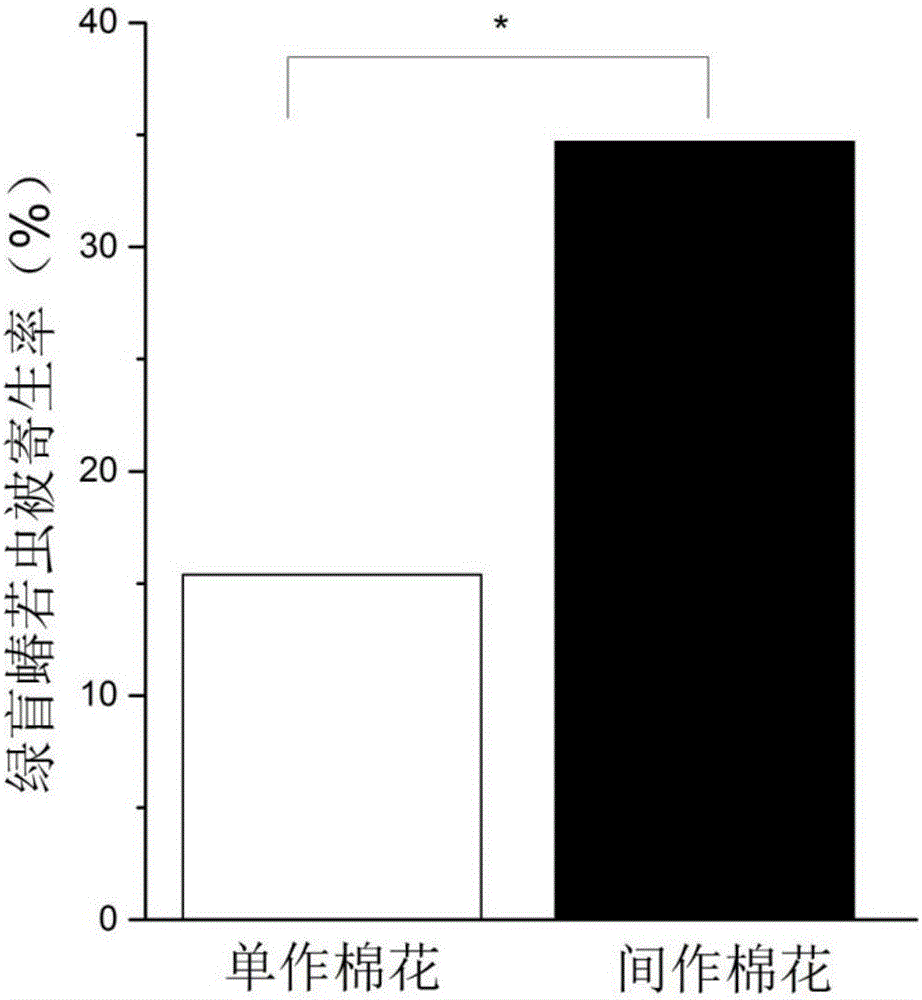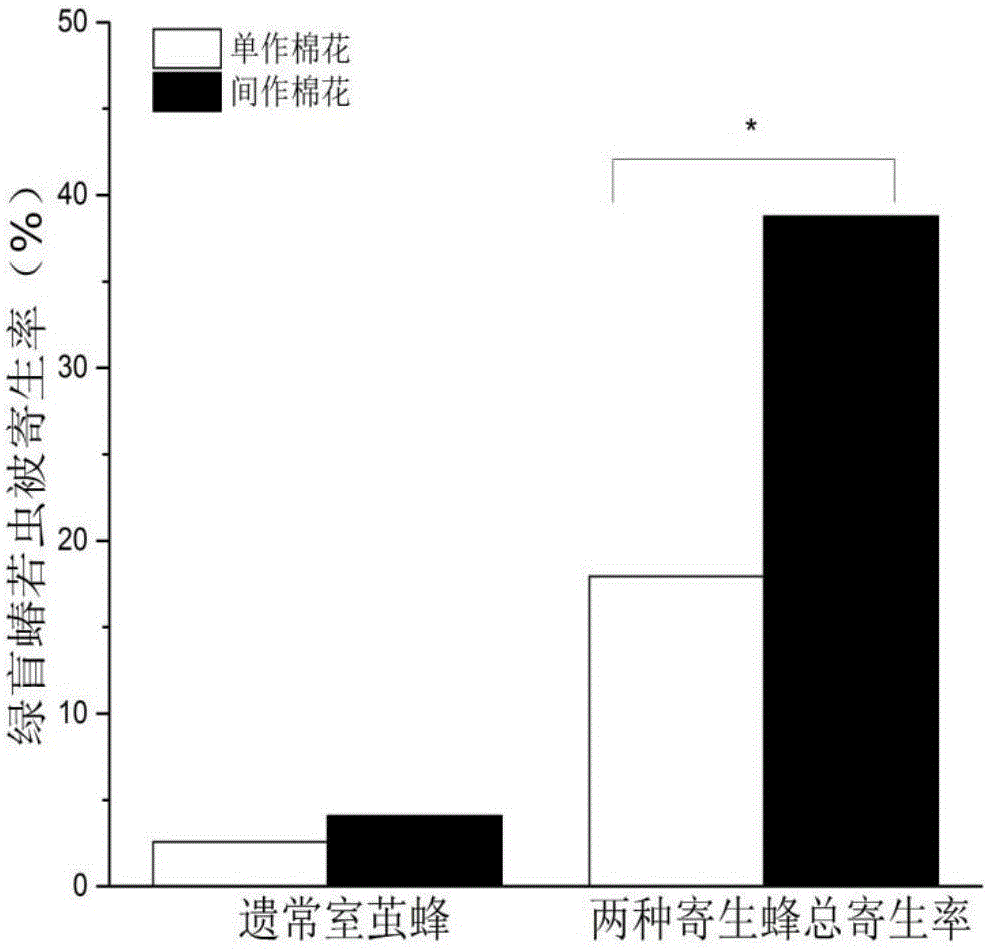Method for increasing parasitized rate of apolygus lucorum in cotton field
A kind of technology of green blind bug and parasitic rate, which is applied in the fields of botanical equipment and methods, horticulture, agriculture, etc., can solve the problems of crop yield and quality impact, bud and flower drop, fruit deformity, etc. control effect
- Summary
- Abstract
- Description
- Claims
- Application Information
AI Technical Summary
Problems solved by technology
Method used
Image
Examples
Embodiment 1
[0021] Test site: Langfang Pilot Test Base of Institute of Plant Protection, Chinese Academy of Agricultural Sciences.
[0022] Select a type of experimental field in the base, plant cotton in it, and sow buckwheat in the form of drill intercropping 35 days after cotton sowing, control the width of each cotton belt to 30m, and the distance between adjacent cotton belts to 4m, each buckwheat The width of the belt is 2m, and the distance between the buckwheat belt and the adjacent cotton belt is 1m, and then the conventional management is carried out.
experiment example
[0026] Experimental method: In different periods of cotton growth, the nymphs of Lygus japonica on cotton in monocropping field and intercropping field were collected respectively, and the parasitism of two kinds of parasitic wasps, B. spp.
[0027] Experimental results: In both Example 1 and Comparative Example 1, the parasitism rate of the red-necked Braconidus was far higher than that of the commoneria, and it was the dominant species. In the intercropping field Example 1, the parasitic rate of the dominant species of Braconus red-necked nymphs to the nymphs of the green Lygus was 34.69%, which was significantly higher than the parasitic rate of 15.38% in the monocropping field comparative example 1 (χ2=4.194 , df=1, P=0.0406) (see histogram figure 1 ). The overall parasitism rate of Braconis spp. in cotton fields was low, and the parasitism rate to Lygus spp. in intercropping fields was 4.08%, which was slightly higher than that to 2.56% in single-cropping fields. There w...
PUM
 Login to View More
Login to View More Abstract
Description
Claims
Application Information
 Login to View More
Login to View More - R&D
- Intellectual Property
- Life Sciences
- Materials
- Tech Scout
- Unparalleled Data Quality
- Higher Quality Content
- 60% Fewer Hallucinations
Browse by: Latest US Patents, China's latest patents, Technical Efficacy Thesaurus, Application Domain, Technology Topic, Popular Technical Reports.
© 2025 PatSnap. All rights reserved.Legal|Privacy policy|Modern Slavery Act Transparency Statement|Sitemap|About US| Contact US: help@patsnap.com


